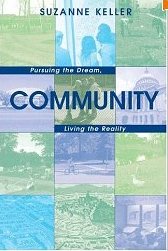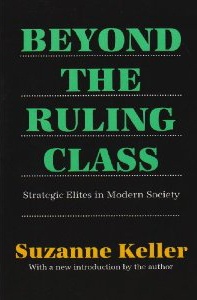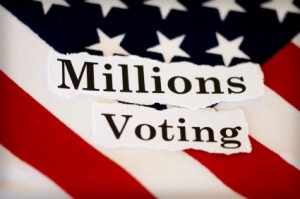College Admissions
College Admissions
Preparing for College
The Best College for You
What to Study
Applications
Education Options
Education Options
Private Universities
Public & State Universities
Community Colleges
Scholarships
Scholarships
African American Scholarships
Latino Scholarships
Native American Scholarships
Women Scholarships
College Grants
College Grants
Federal Grants
Merit Based Grants
Need Based Grants
Student Loans
Student Loans
Federal Student Loans
State Student Loans
No Co-signer Student Loans
Bad Credit Loans
Student Loan Consolidation
College Survival
College Survival
Financial Aid Tips
The Digital Student Blog
There is much more to work-study than just the monetary benefit.
College is first and foremost about earning that all-important degree. Successful students always remember why they are in school and structure their time according to the academic demands placed on them.
But a growing body of research reveals that working on campus while in college pays enormous dividends for students. Those benefits come not only in the form of some much-needed cash to help with the college bills, those opportunities provide students a breadth of experiences that help them better round out their college years.
Work-Study Options
 On-campus work-study programs provide students with part-time employment options during their college years. These programs come in two basic formats: Federal Work-Study and non-Federal Work-Study, often called Student Work Initiative programs.
On-campus work-study programs provide students with part-time employment options during their college years. These programs come in two basic formats: Federal Work-Study and non-Federal Work-Study, often called Student Work Initiative programs.
Federal Work-Study (FWS) is actually a form of financial aid that is awarded to students based upon demonstrated financial need. Therefore, to be awarded Federal Work Study students must first fill out the Free Application for Federal Student Aid (FAFSA) as well as any other financial aid documents required by their school.
Ultimately, to be awarded Federal Work Study a student must meet certain financial eligibility requirements. And to be considered for this option, students must also check “yes” on the FAFSA form where it specifically asks if you are interested in student employment. If you are eligible for Federal Work Study, your financial aid award letter will indicate as such.
While most students work from 10 to 15 hours a week, the amount of hours and thus the sum of money you will be allowed to earn cannot exceed the total amount noted in your total FWS award. It is also important for students to realize that qualifying for FWS will enable them access to specific job opportunities but that students will still need to interview for and secure the actual position (sometimes only a formality but for the best work options more than one qualified student will often be seeking a specific position).
Non-Federal Work-Study (non-FWS) or Student Work Initiative programs are not based on financial need. If you filled out the FAFSA only to learn you did not qualify for FWS, you can still inquire about student employment opportunities on-campus.
Though work options always will exist off-campus, on-campus work-study provides students two key advantages. First, transportation to and from work will never be an issue. Second, on-campus employers are far more accommodating regarding your need to place school first in your life. Therefore, they are more likely to provide you that much-needed flexibility when exams pile up.
And it is important to note that one of the best aspects of Non-Federal Work-Study or Student Work Initiative options is that there is no limit placed on earnings. Therefore, at times when other students are not interested in working you can pick up even more hours should you want to do so.
Benefits of On-Campus Employment
There is little doubt that most college students take a job for the financial benefits associated with it. For some, work is absolutely necessary to help them pay their related educational expenses. For others, employment provides some basic spending money for incidentals and for treating themselves to the occasional night out.
Though most students do work while in school, some believe that working during college serves as a distraction from what should be a student’s primary focus: their academics. But the 2008 National Survey of Student Engagement demonstrated that working while in school was positively associated to student engagement.
Similarly, it is now clear that the work-world can serve to enrich the college experience. Far from being a distraction for students, working during college has proven to be one of the places where students develop two critical employment and life-related skills: teamwork and time management.
 Even working in the school cafeteria can help students develop fundamental work habits. But securing employment with a specific department related to your field of study can provide students with the potential to deepen and enrich what they are learning in the classroom. Perhaps most importantly, working students find their on-campus work experiences help them clarify their career aspirations.
Even working in the school cafeteria can help students develop fundamental work habits. But securing employment with a specific department related to your field of study can provide students with the potential to deepen and enrich what they are learning in the classroom. Perhaps most importantly, working students find their on-campus work experiences help them clarify their career aspirations.
For all of these reasons, the idea of working while on campus is fundamental to the mission of such work colleges as the College of the Ozarks, Alice Lloyd and Berea. These colleges make work and service a fundamental of their educational philosophy.
Give Careful Consideration
Clearly, students can benefit significantly from working while in college. Everything from reducing the amount of money they borrow to rounding out the college experience makes working while in school often one of the most important aspects of the college years for all students.
Such experiences can of course be gained off campus also in the right setting and with the right employer. So those options are deserving of pursuit as well.
But students interested in work-study will generally find a wealth of options on campus where flexibility reigns and transportation is simply not an issue.
There are times when we are reminded of just how much society has changed over the last 100 years. The recent death of Sociologist Suzanne Keller represents just such a case.
Professor Keller holds the important distinction of being the first woman ever granted tenure at Princeton University. Though it is very hard to imagine, she was granted that status in 1968 after having begun her association with the school as a visiting professor just two years before.
We say hard to imagine because it does not seem possible that it would take until 1968 for Princeton to have a tenured women professor. But it shows just how far women have had to come to break the glass ceiling.
 And now, barely forty years later, four of the elite Ivy League schools, once the bastion of male dominance, currently feature female presidents.
And now, barely forty years later, four of the elite Ivy League schools, once the bastion of male dominance, currently feature female presidents.
Historical Perspective
Yes 1968 seems quite late considering the progress women had made since the turn of the century. First, Professor Keller’s appointment came nearly 50 years after the ratification of the 19th Amendment that prevented any citizen from being denied the right to vote based on that citizen’s sex (August 18, 1920).
It would also be a full 52 years after Jeannette Ranking of Montana became the first woman to serve in Congress (1917) and another 36 years after Hatie Wyatt Caraway became the first woman to ever be elected to the US Senate (1932). And it would be 32 years after Ruth Benedict became the first tenured woman at Columbia University in 1937.
But of course, Princeton remained all male until the late 1960s. It was not until 1961 that Sabra Follett Meservey, the first woman in the University’s history, would be enrolled as a full-time degree candidate. Meservey entered as a graduate degree student.
The first full-time undergraduate female students were admitted in 1963 when the Critical Languages Program (CLP) was introduced. A one year program offered during a student’s junior year, this program allowed students from other colleges to spend a year at Princeton studying Arabic, Chinese, Japanese, Persian, Russian, and Turkish languages and related regional studies. The first five women to attend the CLP program at Princeton were actually dubbed “Critters” by resident Princetonians.
It would not be until September of 1969 that the first freshman class would feature females. That year, 101 freshman and 70 transfer students joined the ranks of the Princeton student body. Four year’s later when the first graduating class of coeds left campus one young lady would be the school’s only Marshall scholarship winner that year while another would be one of the school’s three Fulbright recipients.
Importance of Women and Tenure
The much sought after tenure designation has been a critical choking point for women seeking advancement in higher education. It is the first, and most necessary step in a process that can one day lead to administrative leadership positions such as dean and of course, university president.
Tenure has always been a critical issue for all educators who seek to become full professors. It begins with the enormous demands placed on potential candidates to prove themselves early on in their teaching careers.
But the greatest issue is that the quest for tenure, once underway, puts faculty on a time clock. And that clock would never stop easily, most certainly not for pregnancies and the demands of balancing life with work for women.
 In retrospect, the appointment of Keller had to have been a relatively easy one for the school. The sociologist, known for her pioneering research topics on social stratification, community life and elites, authored what has been deemed one of the ground-breaking texts on elite life in America, “Beyond the Ruling Class: Strategic Elites in Modern Society,” published in 1963.
In retrospect, the appointment of Keller had to have been a relatively easy one for the school. The sociologist, known for her pioneering research topics on social stratification, community life and elites, authored what has been deemed one of the ground-breaking texts on elite life in America, “Beyond the Ruling Class: Strategic Elites in Modern Society,” published in 1963.
The native of Vienna, Austria, would later write “Community: Pursuing the Dream, Living the Reality,” regarding her research on middle class life and the need for people to have a sense of connectedness to a larger framework.
Special Place in Princeton History
Professor Keller moved to New York as a child and would later become an American citizen. She had an exemplary academic record completing her undergraduate degree at Hunter College, a master’s degree in social work from Rutgers and a Ph.D. in sociology from Columbia University.
But the respected researcher will always be known by her work at Princeton where she also played a major role in promoting women’s studies as an academic subject and taught the university’s first course on gender during the 1970s. That represented the first of the necessary steps towards the development of women’s studies as a formal program at the once all-male university.
Her place in Princeton history was recognized by Nancy Weiss Malkiel, Princeton’s dean of the college and a professor of history. Dean Malkiel offered the following appraisal of Professor Keller’s importance at Princeton:
“As the first woman appointed to a tenured professorship at Princeton, Suzanne Keller holds a unique position in the history of the university. As a remarkable scholar, teacher and mentor, and a wise and generous colleague, she holds a special place in the lives and hearts of generations of Princetonians.”
Last week we shared with readers the story of 23-year-old Kelli Space, her $200,000 plus in student loans, and her unique method of addressing her dire position. At last check, the young lady had secured donations totaling more than $7,500. Though still $192,500 more is needed, she has to be pleased with both the publicity her plight has drawn and the fact that she is making some progress.
This past week, Justin Cox revealed his effort to deal with his equally difficult position. He too has his own web site, StrummingAwayMyLoans, and has resorted to the loan challenge in what some might call a beggarly way.
“For the next year, I will play music in public at least once per week (in a subway, on a corner, in a coffee shop, wherever),” writes Cox. “I’ll keep a tip jar in front of me, and every single penny I make will be thrown in the direction of those loans. It will be both financially productive and artistically healthy.”
 While some might cast this street musician in a negative light, Cox’s philosophy on the issue is transcendent of the typical view. In fact, there is a lot of respect for someone who notes that there are options for those willing to search.
While some might cast this street musician in a negative light, Cox’s philosophy on the issue is transcendent of the typical view. In fact, there is a lot of respect for someone who notes that there are options for those willing to search.
“Whether it’s cooking, painting, jewelry making or working on your car, your debt can be the motivational catalyst that forces you to revive a dying passion or hone a natural talent,” states Cox. “It’s the ultimate, lemons-into-lemonade approach.”
It is nice to see someone digging deep, looking for any way to earn some additional funds to address their college debt. But street musician is a tough way to make a buck – instead of some $7,500 Cox reveals he took in 37 dollars in his first full month. Not exactly game changing when your loan payment is some $700 a month.
Other Unique Options
Young Mr. Cox and Ms. Space offer their unique approaches to what is a very tough situation. As for other unusual methods, the folks at CollegeScholarships offer some unique options as well.
Suggestion number 110 on their list represents just such an option:
We’re not endorsing prostitution, but if you can give some of yourself by donating blood plasma, you can net an extra couple hundred dollars a month.
Number 111 is similar.
Volunteer for a medical study. Most do not require much time and you get paid!
They do not suggest as much but we know of a young woman who has been giving thought of donating her eggs to a fertility clinic.
Yes, there are the ethical concerns associated with being a donor or being a guinea pig in a medical study, but then again we would suggest there are ethical concerns associated with virtually all of the aforementioned methods.
But if you took out those loans, then there are the ethics associated with meeting your loan payments.
Get Busy Taking Control
But it is suggestion numbers 112 and 113 at CollegeScholarships, two that mirror the philosophy of one Mr. Cox, that we like best.
Sell your expertise in a subject as a tutor, computer skills, music lessons.
We would add that while tutoring you counsel your charges to think twice about taking on gobs of debt.
Get a job in the food service industry. Chances are high that you can eat for free!
Yes, even if it is only to work part-time, flipping burgers could carry some much needed benefits.
Here we turn back to Mr. Cox and his philosophy:
“The goal is not fame and fortune; it’s art and, hopefully, a little bit of financial relief. I still get stressed by the fact that I’m staring down the barrel of decades of debt, but I take some very real comfort in the fact that I might strum a few of those years away.”
The bottom line is get busy – taking charge of your situation is the first step towards progress and ultimately feeling better about yourself.
We shared with readers earlier in the week the scathing report from The Education Trust called Subprime Opportunity: The Unfulfilled Promise of For-Profit Colleges and Universities. While just the latest in a long line of criticism about for-profits, the document proved to be the most scathing rebuke of the industry to date.
Over the week we have delved deeper into the report. One aspect we wanted to review further was an area that some have held up as a shining light for the for-profit industry. We are talking about the graduation rates at two-year and less than two-year schools.
 First and foremost, I agree to an extent with those who offer the mindset that attending college can be a win-win. After all, it is great to have one’s horizon’s expanded and it goes without saying that the knowledge gleaned can’t help but make a student a more productive citizen in the long run.
First and foremost, I agree to an extent with those who offer the mindset that attending college can be a win-win. After all, it is great to have one’s horizon’s expanded and it goes without saying that the knowledge gleaned can’t help but make a student a more productive citizen in the long run.
But at the same time, I am a firm believer that attending college becomes a win-win only if one earns that coveted sheepskin. After all, it is the diploma that generally provides students an opportunity to pursue better paying jobs that also carry with it those much-needed benefits.
In this single arena, the report does indicate that for-profit colleges are actually setting a pretty decent standard. According to the report, the graduation rate for associate degree programs or certificates at two-year for-profits is 60 percent. At the less than two-year for-profits, 66 percent earn a credential.
These percentages are based on completion of a program within the standard three-year time frame (as compared to six years to earn a bachelor’s degree). These completion rates are of course considerably higher than the 22-percent rate posted by community colleges.
One Big Problem
But the folks at Education Trust point out that this completion rate, while far better than the current rate of their public competitors, comes at a heavy price. The report clearly indicates that for-profits are leaving students with significant amounts of debt whether or not we are talking about bachelor’s degrees or associates.
First off, 19 percent of associate’s degree students and 3 percent of those completing a certificate at for-profits have debt loads greater than $30,000. That number is actually 25 percent more than the average debt incurred by all graduates of bachelor degree programs in America.
In contrast, only 2 percent of associate’s degree recipients and 1 percent of those students receiving a certificate at public institutions graduate with that level of debt.
But the real negative has to be the default rates of for-profit students. While college should lead to a path of higher earnings in the long run, it appears that students graduating from for-profits cannot earn enough money to pay back all the funds they have borrowed.
Sadly about 10 percent of for-profit students default on their federal loans within two years of entering repayment. Worse yet, the three-year rate of default nearly doubles to 19 percent.
These default rates are roughly twice the rates of students at public and private nonprofit colleges. In sum total, 43 percent of all federal student loan defaults come from students at for-profit schools. However, only 12 percent of college students attend for-profit schools.
Sum Total
At the bachelor’s level, for-profits have an abysmal graduation track record. At the associate and certificate level these institutions are producing better results than public community colleges.
But the high cost of programming leaves many significantly in debt. Most importantly, the high default rates reveal far too many students cannot overcome their debt burden.
Such a situation calls into question the actual value of the degree itself. It leaves us thinking that the sheepskin from these institutions is simply not worth the cost of attendance.
Let’s face it, when it comes to graduating students, colleges as a group are not getting the job done. With graduation rates trailing those of high schools by roughly 25 percentage points, there is little doubt that college dropouts are a huge issue.
But a new report from The Education Trust reveals that the for-profit college sector takes the 50 percent national college graduation rate to depths not seen before. It seems that the for-profit industry is graduating barely 20 percent of its students when using the standard statistical time frame of six years.
 Though for-profits spend far less to educate each individual student than public and private colleges, the average low-income student at a for-profit actually ends up paying almost $8,500 more per year than the average low-income student at the more expensive private nonprofit. The result is that these institutions, rolling in profits from strong marketing campaigns, appear to be doing very little for students with the exception of saddling them with enormous amounts of debt.
Though for-profits spend far less to educate each individual student than public and private colleges, the average low-income student at a for-profit actually ends up paying almost $8,500 more per year than the average low-income student at the more expensive private nonprofit. The result is that these institutions, rolling in profits from strong marketing campaigns, appear to be doing very little for students with the exception of saddling them with enormous amounts of debt.
This sad state of affairs is summarized in the Trust report as follows:
As with the collapse of the subprime lending industry, the showdown between for-profit colleges and the government shows how the aspirations of the underserved, when combined with lax regulation, make the rich, richer and the poor, poorer. For-profit colleges provide high cost degree programs that have little chance of leading to high-paying careers, and saddle the most vulnerable students with heavy debt. Instead of providing a solid pathway to the middle class, they pave a path into the subbasement of the American economy.
The report certainly clouds our thoughts as to whether or not one should still consider for-profit institutions when thinking of where to apply to school.
Some samples of graduation rates in the report:
University of Phoenix – 9%
DeVry University – 31%
The Art Institute – 41%
Berkeley College – 35%
Sullivan University – 15%
Westwood College – 27%
International Academy of Design and Technology – 16%
School of Visual Arts – 67%
The Illinois Institute of Art – 44%
ITT Technical Institute – 66%
Having borrowed $200,000, a graduate of Northeastern University resorts to begging for help online.
One college student is receiving a great deal of publicity for her unique way of dealing with her student loan debt. In a form that one could only describe as Internet begging, 23-year-old Kelli Space has created the web site Two Hundred Thou.
The home page displays this simple explanation:
I owe over $200,000 in student loans. Please donate to the cause: together we can make these loans disappear faster than you can ask why I went to such an expensive school!
Learning What Not To Do
 With current loan payments of $891 a month, Space provides us a powerful example of how naïve some college students are when it comes to borrowing for school. With payments on her federal loans set to nearly double by November of next year, the young lady now realizes her situation is hopeless unless she can find some extremely charitable souls.
With current loan payments of $891 a month, Space provides us a powerful example of how naïve some college students are when it comes to borrowing for school. With payments on her federal loans set to nearly double by November of next year, the young lady now realizes her situation is hopeless unless she can find some extremely charitable souls.
On her site she offers the simplest of explanations as to how she managed to incur $200k in debt?
Tuition and room + board for four years, along with 2 summer semesters, a 3-month stint abroad (as it is 1 of several options offered to fulfill Northeastern’s experiential education requirement), and books for approximately 3 semesters when I did not have a job at the onset. AND the interest that has accrued over the past 5 years (as interest accrues on private loans as soon as you take them out).
Space insists that she worked most of the time she attended school including her on campus work-study option. She also insists she did not receive any grants, just aid in the form of student loans. In spite of the costs of schooling and the lack of financial support, she also insists that she followed the advice of a financial advisor at the school “to explore other options” to help fund her Northeastern education “including private lenders.”
The Power of Compounding
Space provides us a great lesson in the power of compounding. On the site she reveals that her federal loans alone accrued more than $20,000 of interest during her time in school. So more than one-tenth of her debt is simply the interest on the original loans.
In addition, in her plea for help, Space also demonstrates the famous power of compounding. She notes that she would need one fairy tale donor, a very exceedingly generous soul, willing to cough up the full $200,000 to make her debt free.
 But she could make the issue far more manageable if she could find just 1,000 sympathetic visitors. It would take only a modest $200 donation from each of those individuals to put an end to her debt.
But she could make the issue far more manageable if she could find just 1,000 sympathetic visitors. It would take only a modest $200 donation from each of those individuals to put an end to her debt.
She also notes that just $5 per donor would be enough if she could find 40,000 sympathetic souls and just 67 cents per person if just one of every 1,000 Americans (300,000 out of more than 300 million people) felt enough kindness to help with the young lady’s plight.
The Debt Load
In our Student’s Guide to Finance we offer some basic ways for students to determine how your loans will affect you. We offer the advice of MSN Money professionals who insist that monthly loan repayments from school should not exceed 10% of your expected earnings.
Furthermore, to be safe in determining expected repayment, experts indicate that students should project an 8% interest rate return on the amount borrowed. Under such a scenario, every $1,000 you borrow costs roughly $12 a month to repay for a 10-year loan.
Therefore the average college student who leaves school with $24,000 in debt would face a monthly payment of about $288 per month. According to the MSN experts, to be safe you would need a monthly income of $2,900 to meet the 10% threshold, or a starting salary of about $35,000.
A person accruing $50,000 in student debt would face monthly payments of over $600 and thus require a monthly salary of $6,000 and yearly earnings of $72,000.
Can you predict what Kelli Space now faces?
One Naïve Young Lady
Our quick calculation reveals that $200,000 in student loans would normally yield a monthly bill of about $2,400 and thus require a yearly salary approaching $300,000.
Yes, this young lady would need a salary of $300,000 a year despite having earned only an undergraduate degree.
Such an amount would be viable only if one could claim a graduate degree in law or medicine but would still be a challenge even for them. Nowhere on the site could we find Ms. Space’s college major, so we cannot assess what would have been a realistic amount for her to borrow.
Instead, we can only shake our head in disbelief.
And acknowledge the young lady has now likely taken the only step that might allow her to correct this incredible mistake.
But begging for funds over the Internet is not a method we can recommend others contemplate. Instead, we suggest that students educate themselves on the damage that excessive borrowing can wreck on one’s future.
As the school year heads into its second quarter, high school seniors are now beginning the process of finalizing which schools they will apply to. One aspect of this process involves what may seem like a rather arbitrary decision but it is one that students should think carefully about.
We are talking about the choice as to how many schools to apply to.
Before presenting our recommendation as to how many, let us look at the current norm as published in the 2010 State of College Admission Report.
First off, the 2010 report reveals that seventy-five percent of those students who became college freshman in the fall of 2009 applied to three or more colleges. As for the heavy hitters, nearly one out of every four students (23 percent) submitted seven or more applications.
Clearly, applying to one or two colleges would place you in a distinct minority these days. But the suggestion that everyone is now applying to at least six to ten colleges is simply not accurate either.
 One good reason for limiting the total number of applications is the cost of filing one. According to the report, 90 percent of colleges had an application fee and the overall average was $39.
One good reason for limiting the total number of applications is the cost of filing one. According to the report, 90 percent of colleges had an application fee and the overall average was $39.
But larger institutions, as well as the more selective colleges, tended to have higher fees. However, 84 percent of those colleges that charged an application fee waived them for students with demonstrable financial need.
While applying to a number of schools can be expensive, the ease with which one can apply has grown exponentially. With a common application that can be filed online with the touch of a button, students may now easily apply to multiple schools.
Colleges Seek Your Application
It is important however for students to understand that colleges, in general, are actively seeking your application even if they are not actively seeking you as a potential student. In the college rankings game, it is important for schools to be able to publish data that seemingly demonstrates how sought after the school is by students.
The process works like this: a larger number of applicants is seen by outside agencies as a sign that a school is highly thought of by students. Likewise, a greater applicant pool allows a college to also sift through the many candidates to offer admission to those seen as the most worthy.
The result is that colleges can increase their selectivity rating and thus select a lower percentage of students for admittance. The increased number of applications combined with a lower percentage of acceptances works to improve a college’s ranking in those all important guides.
For that reason, colleges reach out to students for the purpose of drumming up interest in the school. Again, quoting the recent report, on average, colleges and universities spent about $524 just to recruit each applicant for Fall 2009 admission ($843 for each admitted student and $2,553 for each enrolled student). Ultimately, students need to understand that a good many people are working very hard to get an application from you.
The Number to Apply to?
While 23% percent of students currently apply to seven or more schools it is interesting to note that only 13% of students in 2000 applied to that many schools. One reason for the increase may be the concern that more students are attending college and therefore competition for openings is more of an issue.
But is also interesting to note that the acceptance rate for students in 2009 was 67%, nearly the same number (71 percent) as in 2001. That means that virtually every single applicant is accepted by at least one worthy college even if it is not the person’s first choice.
The result is that students are giving careful consideration as to where they will apply and even beginning to rethink the number as well. We read recently where there is a growing consensus that less could be more and the case of a very strong student coming up with a list of just five schools.
Those schools should include a good mix of reach, match and safety schools. And while some are still suggesting applying to between six and ten schools three reach, three match and two safety schools, we believe that identifying one or two reach schools at most, two match and two safety can give students a great deal of choice.
Five to six, maximum remains our recommendation. The key is to do your homework and determine the schools that are the best match for you.
Do not waste time applying to any school based simply on the notion that your peers are applying to eight or more. There is absolutely no sense in applying to a school that you are not 100% interested in attending no matter how easy it is to apply or how much one specific school seems to be reaching out with admissions info.
When it comes to students choosing where to apply to college, there is growing evidence that the total cost of attendance is not given enough consideration. In fact, the failure to discuss how students are going to pay for school is called the “Pink Elephant in the Room” by Anne Richardson, the Director of College Counseling at Kents Hill in Readfield, Maine.
A new report from the College Board and the higher education consulting firm Art & Science Group LLC, confirms Richardson’s assertion. The new study reveals that many students consider colleges that they simply cannot afford to attend.
 More than a thousand high school seniors were interviewed in the study. Participants were randomly selected and interviewed on two occasions.
More than a thousand high school seniors were interviewed in the study. Participants were randomly selected and interviewed on two occasions.
In the early part of winter students were asked where they were thinking of applying to college. In addition, the researchers asked students about the challenges of paying for school. Just over 900 of those students were then randomly selected for a follow up session in late spring where they were asked the same set of questions.
In the first set of interviews, 63 percent of the students indicated that they and their families would have a hard time paying for college. In the second set of interviews, 59 percent continued to indicate that they would have a hard time paying for college.
However, though it was clear that the cost of college was going to be a significant challenge for more than half of the respondents, the students clearly had done very little work towards determining how they were going to pay for school. Despite the large number of web sites offering financial aid calculators, 40 percent of the second group of interviewees still had not used an aid calculator to examine how much they and their families would be required to pay.
The most disappointing element was the number of students who indicated that they were going to “work out how to pay” for school when the time comes. While 24 percent of the early group gave such a response, come spring, when the time was now upon them, 22 percent still gave the very same answer.
In addition to not having done any additional work as to how they were going to pay for school, the respondents also clearly lacked a basic understanding of what payments they would have if they borrowed for school. For the first group polled, 40 percent said that they had “no idea” what their loan repayment would be on a monthly basis. For the second group, 39 percent said the same thing.
Sadly, too many students focused on school prestige and strength of academic programs exclusively and gave little regard as to how they were going to pay for these schools. Simply stated, those polled were not giving enough thought as to the affordability of specific schools.
Art & Science group principal Richard A. Hesel told the Chronicle of Higher Education that he is worried about this disconnect, that far too many students are unrealistic about how they will pay for college. He goes on to insist that “institutions have to work much harder to monitor what’s going on with students and stay in touch.”
While we agree with his assessment to an extent, we must insist that students and families also own a piece of this problem. There needs to be a critical discussion at some point that focuses in on how much is “too much to pay for college.”
Of course, that value changes if one has to borrow significant sums to earn that all-important diploma. If one is of unlimited means, then the question becomes essentially moot, the prestige and programming at the most expensive schools is likely the way to go.
But if one has to take on debt the question as to how much is too much is a fundamental one for students and parents. Depending on one’s future earning power, borrowing can become a real problem.
The fact that students and their families are not tackling the “pink elephant” in the room is appalling. The failure to have this discussion is clearly one of the key reason’s why student debt has reached crisis stages.
Credit card companies with excessive fees paying colleges millions for the right to access you on campus.
Over the past few weeks we have spent a great deal of time discussing the growing problem of student loan debt. Simply stated, students are borrowing far too much in the process of earning their diploma and their accumulated debt is endangering their entire future.
At the same time that loan debt is creating a heavy burden for students, another form of debt is wreaking havoc for the general public. We are talking about credit card debt, an issue for all adults including those just graduating from college.
 Current data suggests that college students possess an average credit card debt of $4,100. Such a number is almost inconceivable to us, because this is not the number the highest set of borrowers owes – it is the average. With credit card interest rates for young people at astronomical levels, those accumulating such a level of debt soon find their monthly payments growing without those payments reducing their card debt.
Current data suggests that college students possess an average credit card debt of $4,100. Such a number is almost inconceivable to us, because this is not the number the highest set of borrowers owes – it is the average. With credit card interest rates for young people at astronomical levels, those accumulating such a level of debt soon find their monthly payments growing without those payments reducing their card debt.
We have long advocated that students think twice about all debt but particularly that associated with credit cards. To ensure that students don’t get in over their heads, we have advocated that they shop around and get a single card that can be used only in a true emergency. We further advise students who have charged or continue to charge any amount to pay the balance in full each and every month to avoid the exorbitant interest charges most credit card companies assess.
Resisting Temptation
Clearly, that advice has been falling off deaf ears. But then again, we can easily grasp how students get snookered given how hard card companies work to get a card into your hands.
Thanks to the Credit CARD Act of 2009 it is now possible to get a full glimpse as to how much companies are willing to spend to get students onto the debt bus. Under the Act, credit card issuers had to submit some very specific data to the Federal Reserve. That data included how much money credit card companies spent in fees to universities just so that they could set up shop on college campuses. In addition the CARD Act demanded issuers release how many new accounts were opened due to these on-campus opportunities.
Consider the data that was collected. First off, credit card issuers paid more than $83 million for the right to go on campus and thus potentially sign students up for an account. That’s correct, a total of $83 million.
According to the data collected by the Federal Reserve, a total of 17 different credit card companies issued more than one thousand college card agreements. As but just one example of the 17, Chase Bank spent over $13 million to entice new student customers. This of course does not take into account the cost of each company’s employees’ time on campus recruiting new customers.
 At the same time, to get a sense as to how much these credit card companies are making off of students, this $83 million enabled card companies to sign up 53,000 new student clients. This translates to an astonishing figure: these companies spent, on average, about $1,600 for each and every student just for the right to sign these new customers up.
At the same time, to get a sense as to how much these credit card companies are making off of students, this $83 million enabled card companies to sign up 53,000 new student clients. This translates to an astonishing figure: these companies spent, on average, about $1,600 for each and every student just for the right to sign these new customers up.
Yes, these companies spent $1,600 just for the right to try to get a card in your hands. Anyone with a basic business understanding realizes that to make up these initial marketing costs, the cards offered have to be laced with fees and high interest rates. Otherwise, these companies would not spend such extraordinary sums of money just to get the chance to sign you up for card.
Their goal is simple – get a card into your hands and then start charging you excessive fees whenever you miss a payment or incredible interest rates when you are unable to pay off the loan balance immediately.
Don’t Get a Card on Campus
The thought of easy access to credit can be enticing but students need to understand that those card companies on campus are simply not the ones to consider. If you head over to CreditCardConnection.org you will see a list of those companies that Credit Card Connection warns consumers to avoid due to their unfair and unethical practices.
A single credit card to be used in emergency situations is a good idea. But not all cards are created equal – do your homework and find a card that has reasonable interest rates and minimal finance charges. Many credit unions offer a card that offers reasonable access to credit as well as a fair fee structure should you not be able to keep your monthly balance zeroed out.
The bottom line is that debt is a very bad thing and we are talking all forms, student loan and credit card. But the most insidious is credit card where card companies take advantage of unsuspecting students.
If you see one of those card companies on your local campus, you would do yourself a favor if you began walking in the other direction as fast as you can.
It is not quite two years removed from the point when the youth of America propelled a relative unknown senator into the White House. Yet, for many Americans, it seems like an eternity since Barack Obama was elected.
For those twenty-something’s who saw his election as a watershed moment, the current climate in Washington no doubt has them wondering why, once upon a time, they had such optimism. In fact, the partisanship being displayed by our elected officials may well be at an all time high.
 The shift has many suggesting that 2010 could well be the “Year of the Non-Youth Vote.” John Della Volpe, the Director of Polling at the Harvard University’s Institute of Politics, postulates just such a scenario.
The shift has many suggesting that 2010 could well be the “Year of the Non-Youth Vote.” John Della Volpe, the Director of Polling at the Harvard University’s Institute of Politics, postulates just such a scenario.
According to Della Volpe, for more than a decade the Harvard Institute of Politics study group has met regularly to discuss the current generations involvement in politics. Della Volpe insists that “the overarching narrative of the last ten years has been that of a new, potentially great generation — a generation that seemed intent on making an impact first as community volunteers and then in the voting booth.”
But in the aftermath of the economic downturn and the extreme partisanship overtaking Washington, it now appears that more than 70 percent of young voters are not sure that they will vote in the upcoming midterm elections. Furthermore, less than one-in-five Millennials aged 18 to 29 indicates that they are politically engaged as this year’s election approaches.
Discouraged, Like Most Americans
The result is extremely troubling though we might contend that Americans of all ages just might be thinking it is time to sit this election out. Without a doubt, the voters that were the catalyst for Obama’s election have gone from strong levels of optimism to extreme pessimism.
It is a sentiment that borders on despair, a feeling that comes when the populace becomes completely discouraged with politics. But as November 2nd approaches, Dell Volpe indicates that it is “not too late for young people, the great Millennial generation, to use the technology and tools that they invented to spread the word and encourage their friends and family members to spend five minutes to vote.”
He further notes that President Obama “challenged Americans to hold both him and other elected officials accountable” for their achievements or lack thereof.
We couldn’t agree more.
Time to Vote
 In simplest terms, now is the time for accountability for all of those currently in office. And those currently serving cannot be held accountable unless voters exercise their right to cast a ballot.
In simplest terms, now is the time for accountability for all of those currently in office. And those currently serving cannot be held accountable unless voters exercise their right to cast a ballot.
Now it is the time to set aside our discouragement, to stop making excuses for inaction. It is time for us to review the candidates, their records and their position on issues so as to be able to make an educated decision as to who is worthy of our vote.
America faces many difficult issues in the coming years: our debt load, our looming social security and medicare shortfalls, our need to make health care available to all, that it is not only about creating jobs but about a high quality of life for all citizens, etc. All represent challenges that demand elected officials who are willing to work collaboratively for the good of all people, not just a single segment of society.
For those at a loss as to who to consider, we would suggest trying to help eliminate the gridlock by looking at the progressive, middle of the road, candidates, as opposed to either those on the far left or right. In our view, candidates who postulate that only Republican ideals are good or that only Democratic ideas are worthy are simply not going to help us move forward as a country.
In other words, we challenge readers to consider both the people and their issues according to an independent set of standards as opposed to a simple assessment that has a person voting simply on party lines.
At the same time, it is not too late to read up on the other issues that are special items in your local community. If you are not sure what the issues are and where you or other people stand, get online and begin a Google search of those items coming up for consideration.
Check your local and other state papers as to where the editorial boards of these entities stand. With some very brief work you can get up to speed on all issues and how they affect you.
Ultimately, it is our duty as US citizens to enter our views at the ballot box come next Tuesday.
Yes, duty calls – so no excuses, make time to vote!